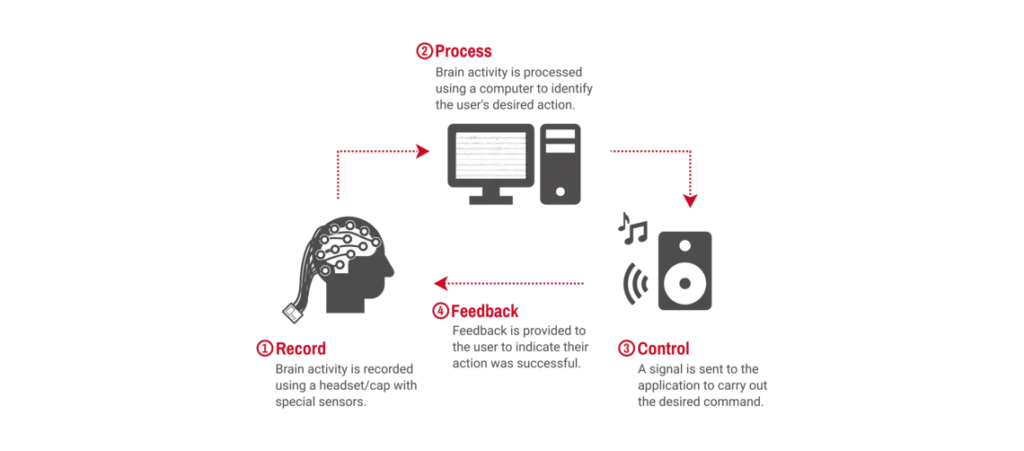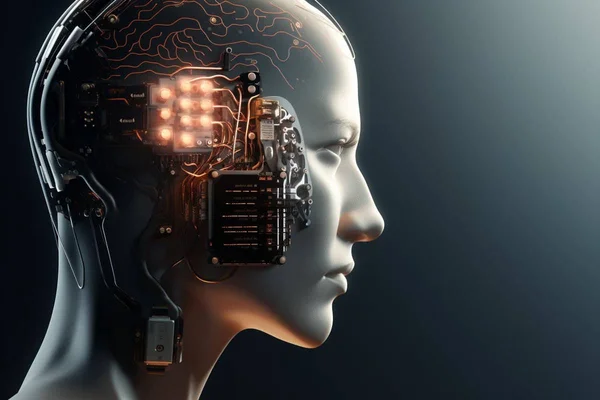Brain-Computer Interface (BCI) is revolutionizing the treatment of neurological disorders with Neuralink.
About the Neuralink:
- The Neuralink is a compact device that is surgically embedded within the human brain to revolutionize the treatment of neurological disorders like ALS (Amyotrophic lateral sclerosis) and Parkinson’s disease.
- It is a kind of Brain-Computer Interfaces (BCIs) that will establish direct communication pathways between the human brain and computers.

About the Brain-Computer Interfaces (BCIs):
- The Brain-Computer Interfaces (BCIs) is a system that captures and translates brain activity into commands, enabling direct control of devices or applications without physical movement.
- It bypasses traditional neuromuscular pathways, offering a novel method of interaction, especially beneficial for individuals with severe physical impairments.
How It Works?
- Itutilizes devices like headsets or caps fitted with sensors to detect brain signals.
- A computer analyzes the brain activity to identify the user’s intent using sophisticated algorithms.
- The system sends commands to the intended device or application based on interpreted brain activity.
- Theusers receive feedback from the controlled device, aiding in adapting and refining their control over the system.
The Core of BCIs:
- Neurons in the brain communicate through electrochemical signals, forming networks that manage bodily functions and cognitive processes.
- These signals generate detectable electrical activity, measured by BCIs to interpret user intentions.
- BCIs do not read thoughts but detect patterns related to specific cognitive processes or responses to stimuli.
Applications of BCIs:
- It can enable communication, controlling prosthetic limbs, and administering therapies for those with physical disabilities.
- It can operate personal computers, environmental controls, and power wheelchairs.
- It can be used to enhance video games, virtual reality experiences, and monitoring attention levels in demanding jobs.
- It can assess emotional and cognitive reactions to marketing stimuli.
Ref: Source
| UPSC IAS Preparation Resources | |
| Current Affairs Analysis | Topperspedia |
| GS Shots | Simply Explained |
| Daily Flash Cards | Daily Quiz |
Frequently Asked Questions (FAQs):
What is Neuralink?
Neuralink is a brain implant founded by Elon Musk that aims to revolutionize the treatment of neurological disorders by establishing direct communication pathways between the human brain and computers.
How do Brain-Computer Interfaces (BCIs) work?
Brain-Computer Interfaces (BCIs) work by capturing and translating brain activity into commands, enabling direct control of devices or applications without physical movement, using devices like headsets fitted with sensors to detect brain signals.
What are some applications of Brain-Computer Interfaces (BCIs)?
Applications of Brain-Computer Interfaces (BCIs) include enabling communication, controlling prosthetic limbs, administering therapies for physical disabilities, operating personal computers, enhancing video games, virtual reality experiences, and assessing emotional and cognitive reactions to marketing stimuli.
Which neurological disorders can Neuralink help treat?
Neuralink can help treat neurological disorders like ALS (Amyotrophic lateral sclerosis) and Parkinson’s disease.



